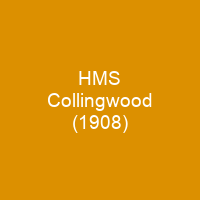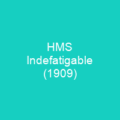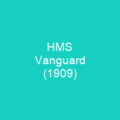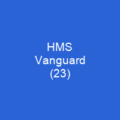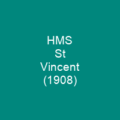HMS Collingwood was a St Vincent-class dreadnought battleship built for the Royal Navy in the first decade of the 20th century. She spent her whole career assigned to the Home and Grand Fleets and often served as a flagship. The ship was deemed obsolete after the war and was reduced to reserve and used as a training ship before being sold for scrap in 1922.
About HMS Collingwood (1908) in brief

In addition, a pair of 3-inch anti-aircraft guns were added to a total of 14 guns mounted as anti-torpedo boat guns as well as single 4-inch AA guns. The St Vincentclass ships were equipped with ten breech-loading 12-inch Mk XI guns in five twin-gun turrets, three along the centreline and the remaining two as wing turrets. All guns were in single mounts. The secondary, or anti-Torpedo Boat, armament comprised twenty BL 4-inches Mk VII guns. Two of these guns were each installed in the roofs of the fore and aft centreline turrets and the wing turrets in unshielded mounts, while the other ten were positioned in the superstructure. The three armoured decks ranged in thicknesses from. 75 to 3 inches. The front and sides of the forward conning tower were protected by 11-inch plates, although the rear and roof were 8 inches and 3 inches thick, respectively. The guns on the forward turret roof were removed in 1911–1912 and the upper forward pair of guns in the superstructure were removed in 1913–1914. In 1911 her crew numbered 758 officers and ratings, and in 1918, the bridge structure was enlarged around the base of the forward tripod mast. She carried enough coal and fuel oil to give her a range of 6,900 nautical miles at a cruising speed of 10 knots. She only reached a top speed of 20. 62 knots during her full-power, eight-hour sea trials on 17 January 1910.
You want to know more about HMS Collingwood (1908)?
This page is based on the article HMS Collingwood (1908) published in Wikipedia (as of Nov. 03, 2020) and was automatically summarized using artificial intelligence.
